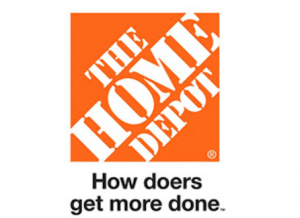Do you know that businesses that personalize their web experience through product recommendations witness a significant increase in conversion? According to a report by Mckinsey & Co, 35% of purchases on Amazon are a result of their recommendation engine. Nowadays, almost every online business leverages product recommendations to improve customer satisfaction, boost revenues, and solidify personalization. It is apparent that if they are strategized properly, they can increase click-through rates, average order value, conversions, and other important metrics for the company.
What is a Product Recommendation Engine?
It is a system that gathers information and utilizes algorithms to make recommendations to benefit the customer as well as the business. The information is accumulated for every user and analyzed according to the categories like past purchases, demographics, or search history. Based on this, the system delivers content that is aligned with the customer’s needs. The display of narrow choices of highly relevant products makes decision making smoother. According to an analysis by Salesforce, this system may account for a small percentage (7%) of visits but a sizable chunk of revenue (22%).
How to Leverage Product Recommendations on Websites?
While browsing or shopping online, the buyers expect a customized and seamless experience. To cater to this expectation and boost conversions, an advanced recommendation engine is more required than ever.
A report by Business Insider reveals that although the majority of customers look for an enhanced personalized experience, only 22% are satisfied with the level of personalization they receive. Improvement of shopping experience via product recommendations gives an impetus to your business. The type of recommendation to be shown depends on where the buyer is on his journey.
Following are the best practices to keep in mind while devising efficient recommendations:
1. Homepage
For any user visiting the website for the first time, the homepage or the main page is the primary interaction point. The first-time visitors don’t have a specific intent in their minds and therefore, the stores are unable to gather sufficient data about them to recommend relevant products. Hence, the recommendations for first-time visitors on the homepage strive to help them explore and discover products. Considering that you already have enough data for returning customers, personalized product recommendations can be easily utilized. For instance, if the consumer bought a television earlier, you can show new arrivals of television accessories.
Product recommendations that can be employed here include:
- Most popular products – various rules can be anchored for popularity
- Best-selling products
- Recently launched items
- Products having sales or offers
- For returning visitors, products related to past purchase or discounts on recently viewed items
2. Category Pages
The category pages should be precisely and promptly differentiated. Recommendations on category pages are almost similar to the ones on the homepage, though there is only one difference. The showcased items are specific to the category or subcategory that the users are viewing. Here, the displayed products are based on the interaction between the customers and the website.
Product recommendations that can be used here include:
- Best-selling items of the category
- Popular products of the category
- Recently added products in the category
- Products having offer or sale in the category
- For returning visitors, items associated with their past purchase from this category
3. Product Pages
Detailed information about the product that you are selling are displayed in the product information page. When consumers visit a product page, we gather some data to ascertain whether this is their first product or have they seen other products. Tailored suggestions can be provided by utilizing this available data. The recommendations on product pages are aimed at increasing average order value and conversion rate.
Product recommendations that can be employed here include:
- Associated or complementary products (cross-sell)
- Accessories (cross-sell)
- Similar products
- Frequently purchased together (up-sell)
4. Cart Pages
During the last step of the customers’ journey, it is crucial to let them complete the transaction without any distraction. But, this opportunity can be leveraged by businesses to boost sales by effectively recommending products. The main objective of the product recommendations on the cart page is to raise order value.
Product recommendations that can be utilized here include:
- Add-ons or accessories (cross-sell)
- Newly viewed products
- Higher value alternative of products added to the cart (up-sell)
- Add-ons to get free shipping or other offers
- Frequently purchased together products for items added to the cart (up-sell)
5. Order Confirmation Page
Most businesses think that the deal is done once the customers have made their purchase. Though, that is not always right. They should still recommend items based on user interaction. The principal purpose of this recommendation is to provide users another hook so that they can continue their journey on the site and therefore restart the loop again. Considering that we have significant data at this stage, these recommendations must be more personalized.
Product recommendations that can be utilized here include:
- Cross category recommendation
- Bestsellers (related to the purchased items)
- Trending items
- New arrivals
6. Error or Out of Stock Pages
Reaching an ‘out of stock’ or ‘404 error’ page increases the possibility of users abandoning the purchase. The exit rate is usually very high for such error pages leading to potential loss of conversion. Such pages can be converted into possible opportunities for businesses by displaying bestsellers (to keep users engaged), items based on browsing history, etc. This can act as an excellent catalyst in renewing the otherwise disrupted experience.
Product recommendations that can be utilized here include:
- Products similar to the sold-out or searched items
- Recently viewed items
- Bestsellers
Conclusion
Consumers land on a website from different channels. Regardless of whether you’re upscaling your present recommendation engine or developing one from scratch, you must provide users with intelligent guidance. Once a basic structure for product recommendations is in place, a detailed data capturing and analytics system should be implemented by appending another data layer. Consequently, by applying machine learning one can improve recommendations.
Various product recommendations can be used by businesses to boost revenues, customer experience, and engagement. But the key here is to keep your short term and long term objects in mind and then implement them in a structured way. Hence, a robust product recommendation engine will help your customers make more informed choices with much ease and thus raise your top and bottom line. An advanced product recommendation with cutting-edge technology is the way to stay ahead of your competition.
Digital & Social Articles on Business 2 Community
(38)





